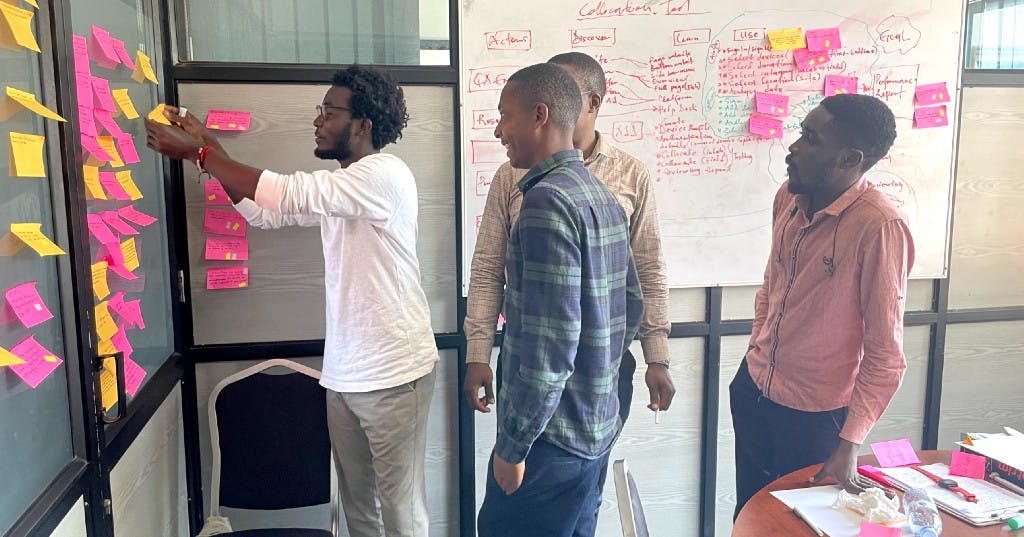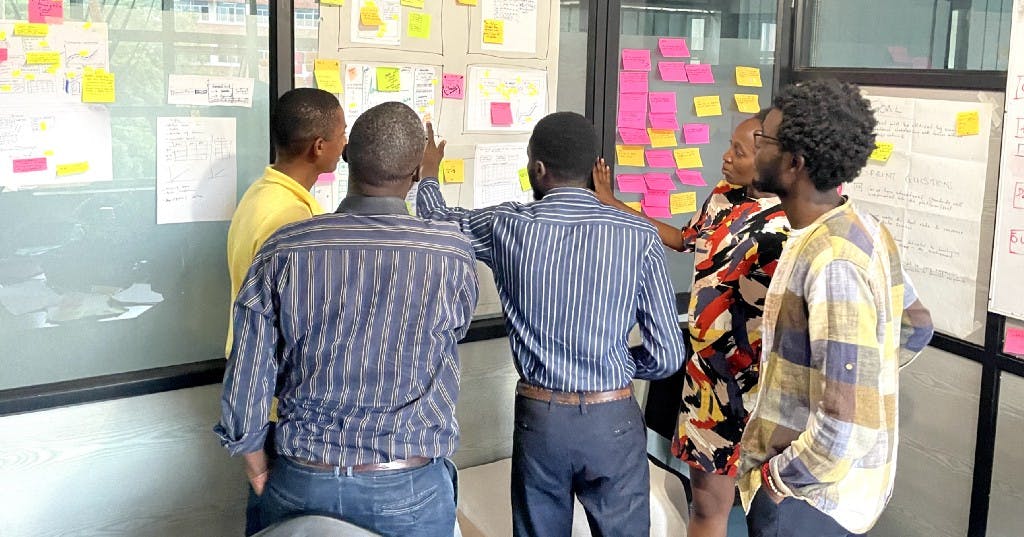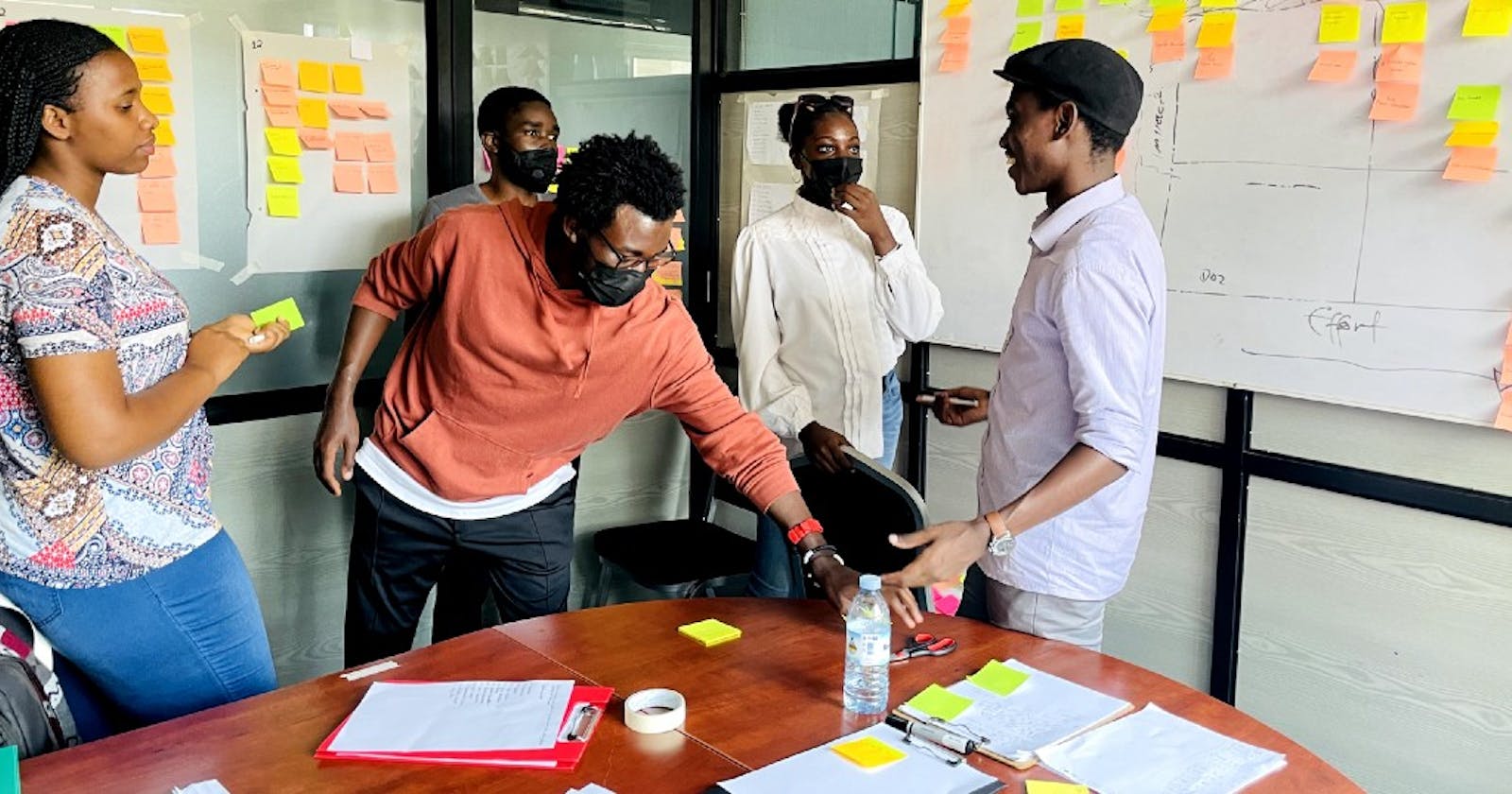Design Culture at AirQo
Practicing UX and Scrum. As a lead designer at AirQo, I had to embrace reality. To learn and infuse scrum into my workflow.
Here is what you need to know about AirQo. The ingenious folks at AirQo designed a device that tracks air pollution — to this day I’m still struggling to understand how they pulled it off. It’s so cool that these guys got Google’s attention. Out of hundreds of participants in the global AI competition organized by Google — Google chose AirQo.
One question before we talk about the design and culture. Why is the AirQo device important?
Allow me to use COVID-19 to best explain the value this device brings to communities. During the COVID-19 wave, countries with robust testing systems used data as evidence to devise solutions and limit the spread of the virus. If you contrast this with countries that had poor testing systems, they lived in the dark with no data and no evidence to limit the spread. Similarly, without the data(evidence), it becomes extremely hard to devise solutions to combat global challenges like air pollution.
Now, this is how the AirQo Monitor comes in. To collect, analyse and forecast air quality data using machine learning and artificial intelligence — to international standards, and work with partners to reduce air pollution and raise awareness of its effects to the citizens of Africa.
Think of AirQo as a deep tech organization with a proposition to design low-cost air pollution monitoring networks and digital tools to probe and tell the air quality story in Africa. When I joined back in early 2021, my goal was(and still is) to introduce design to the organization — improve all products across mediums.
Now let’s talk about the design culture at AirQo.
Organizational transformation
According to Engle’s Flight, organizational transformation is the process of transforming and changing the existing corporate culture to achieve a competitive advantage or address a significant challenge. If done right this can be an exciting time for any organization.
It’s already happening! I was the first product designer to join the AirQo project — which illustrates my duty position. AirQo embraces the scrum framework which I 100% commend for the speed at which the team ships products.
If you are familiar with scrum, it’s a framework that is super unsettling for product design. And considering how much success the team has had with the framework — trust me, the entire organization wasn’t gonna buy my pitch to switch to a user-centered framework(Not just for one designer on the team 😁)
So what was the workaround?
Step 01, I learned and adapted to scrum
As a lead designer, I had to embrace reality. To learn and infuse scrum into my workflow. For your information, UX Scrum is not a new phenomenon — you’ll come across a number of articles and pieces around UX and Scrum.
After a full year of practice, I was ready to slide in a few changes in favor of a user-centered approach. These changes met pushback but I went all in; documenting the entire user-centered framework — a magic pill that would later streamline the design process.
At this moment in time, we already see the fruits of this transformation. The team appreciates the togetherness of design(™Good Design is Designed Together).

We run workshops designed to encourage engagement across teams. We invite folks from hardware, engineering, comms, and whatnot to contribute, to the solution space.
If I ever win a lottery, I would buy everyone at AirQo the Design Sprint Book. The folks are falling in love with this framework. It’s fascinating how Design Sprints give everyone superpowers to think like a designer.
I wake up to a workshop every other day at AirQo — The great upside moment of cultural transformation.

I’m certain that most of you — you’re still reading waiting on me to get to the part where I talk about design screens, prototypes, and Figma.
Maybe next time. For now, I find cultural change as the major cog in the engine.
Key takeaway!
- Scrum Sprints loves Design Sprints
- UX Scrum is learnable
- Design is not for Designers only
Cheers
Brand/Product designer
Are you a developer? We invite you to leverage our open-source air quality data API on your app or project. Click here to get started.

